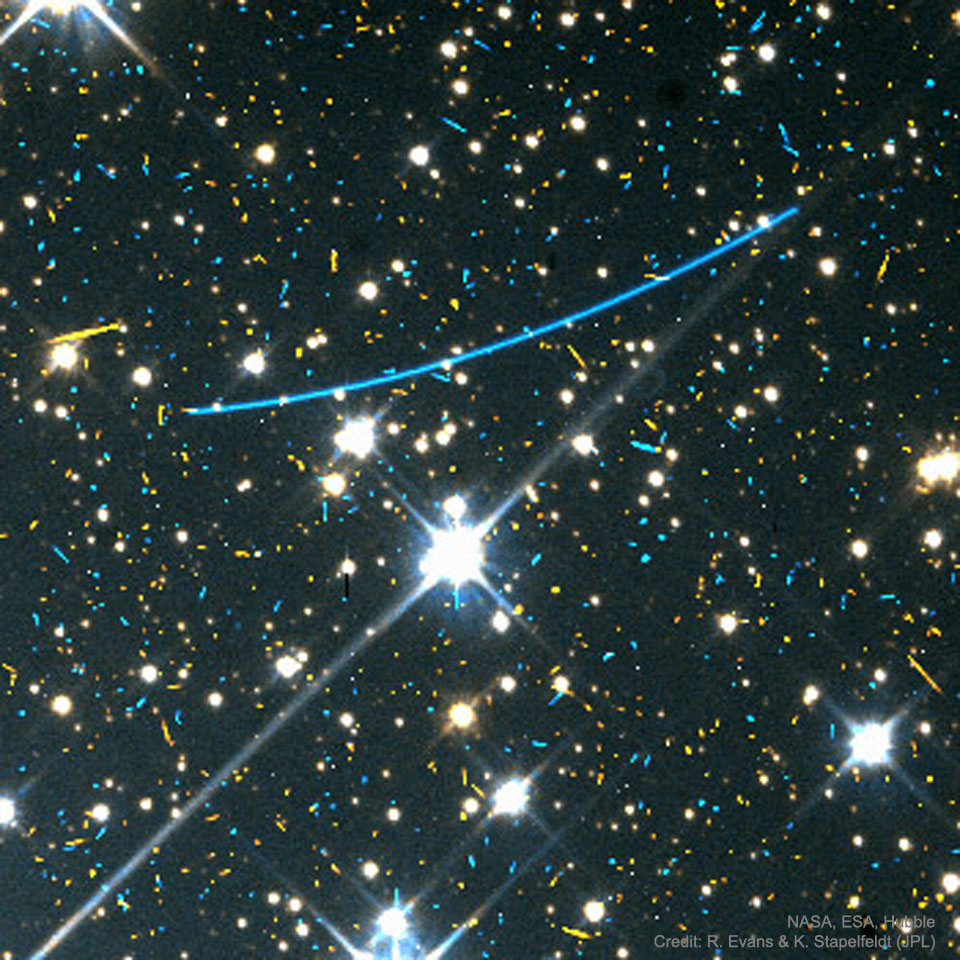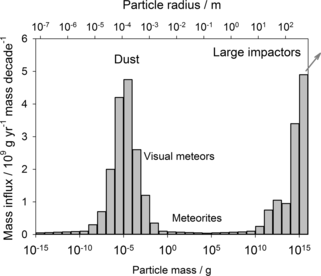https://link.springer.com/article/10.1007/s11214-017-0458-1 wrote:
Impacts of Cosmic Dust on Planetary Atmospheres and Surfaces
by John M. C. Plane, George J. Flynn, Anni Määttänen, John E. Moores, Andrew R. Poppe, Juan Diego Carrillo-Sanchez & Constantino Listowski
Space Science Reviews volume 214, Article number: 23 (2018)
Published: 21 December 2017
Surface Accretion of Dust and Meteorites
<<The contribution by dust and meteorites to planetary surfaces was demonstrated by the Apollo samples. Elemental analyses showed that the Lunar regolith and regolith breccias had elevated levels of Ir, Au, Zn, Cd, Ag, Br, Bi, and Tl compared to the ordinary Lunar rocks in a pattern that indicated the addition of 1.5% to 2.0% carbonaceous chondrite-like material to the regolith (Keays et al. 1970; Anders et al. 1973). In the case of the Earth, the mass flux at the top of the atmosphere has been estimated by combining results from satellite impact measurements for small particles, radar meteors for intermediate size objects, and the cratering record for large objects, as discussed by Peucker-Ehrenbrink et al. (2016). As shown in Fig. 7, the mass-frequency distribution is bimodal, with peaks corresponding to the continuous, planet-wide input of dust and the infrequent impact of large bodies, with a minimal contribution from objects in the intermediate size range.
Measurements of impacts onto the Long Duration Exposure Facility, which was in low-Earth orbit for about 69 months, indicate that the accretion rate of cosmic dust into the Earth’s atmosphere is 110±55 t/d [= 20,000 to 60,000 tonnes/year] in the current era (Love and Brownlee 1993). This is at least 100 times larger than the annual influx of meteorites (Bland et al. 1996), with particles in the narrow mass range from 10
−8 to 10
−3 g contributing more than 80% of the total mass flux of meteoritic material in the 10
−13 to 10
6 g mass range incident on the Earth (Hughes 1978; Carrillo-Sánchez et al. 2016). Modeling by Carrillo-Sánchez et al. (2016) of the dust up to 500 μm in diameter indicates that the total mass input is 43±14 t/d, with 35.4 t/d surviving as either unmelted particles or melted spherules, and the remaining 7.9 t/d being deposited in the upper atmosphere as ablated atoms. The dust accretion rate was likely much greater during the first 0.6 billion years of Solar System history, when asteroids and comets were more abundant in the inner Solar System as evidenced by the higher impact rate of large objects on the Moon during the Late Heavy Bombardment (Hartmann et al. 2000).>>
 Asteroids in the Distance
Asteroids in the Distance


